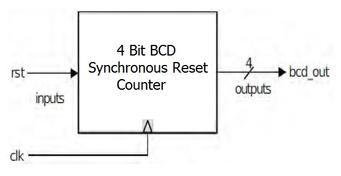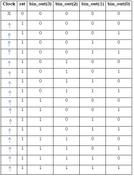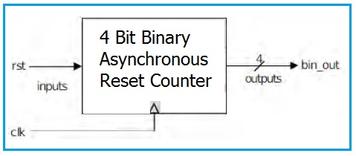4-Bit Binary Synchronous Reset Counter in Verilog
Advertisement
This page provides the Verilog source code for a 4-bit binary synchronous reset counter. You’ll also find the block diagram and truth table to help understand how it works.
Block Diagram
Here’s a block diagram of the 4-bit binary synchronous reset counter:
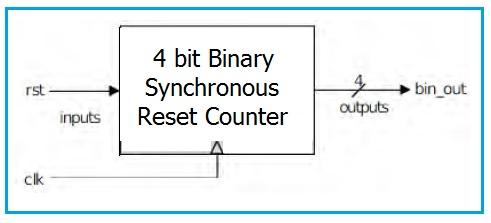
Truth Table
The following truth table illustrates the counter’s behavior:
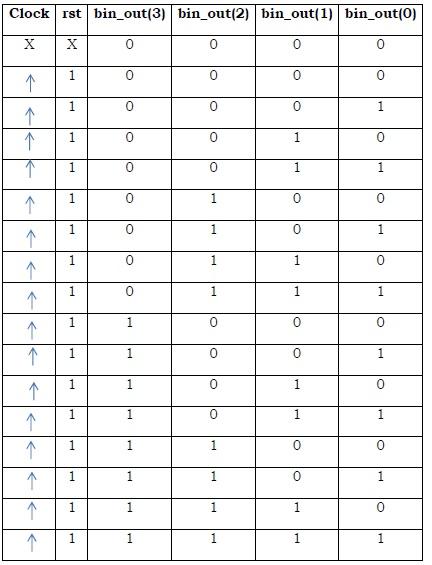
4 Bit Binary Synchronous Reset Counter Verilog Code
module bin_sync(
clk,
rst,
bin_out
);
input clk, rst;
output [3:0] bin_out;
reg [3:0] bin_out;
reg [22:0] div; // Added a clock divider
reg clkdiv; // Clock divider output
initial bin_out = 4'b0000;
initial div = 23'b0; // Initialize the divider
always @ (posedge clk) begin
div <= div + 1'b1; // Increment the divider at each clock edge
clkdiv <= div[22]; // Use the MSB as a divided clock
end
always @ (posedge clkdiv) begin
if (rst == 1)
bin_out <= 4'b0000; // Reset to zero when rst is high
else
bin_out <= bin_out + 4'b0001; // Increment on clock edge when not reset
end
endmodule
Explanation:
- Module Declaration: The
bin_syncmodule hasclk(clock),rst(reset), andbin_out(4-bit output) as input and output signals, respectively. - Internal Register:
bin_outis declared as a 4-bit register to hold the counter’s value. A 23-bit registerdivand a 1-bit registerclkdivare added to divide the input clock. - Initialization: The
initialblock sets the initial value ofbin_outto 0000. - Clock Division: The
always @(posedge clk)block implements a simple clock divider. Thedivregister increments on every rising edge of the input clock. The 22nd bit (MSB) of thedivregister is assigned toclkdiv, effectively dividing the input clock frequency by 222 = 4194304. - Counter Logic: The
always @(posedge clkdiv)block describes the counter’s behavior. When the reset signalrstis high,bin_outis reset to 0000. Otherwise, on each rising edge of the divided clockclkdiv,bin_outis incremented by 1.
Advertisement
 RF
RF


